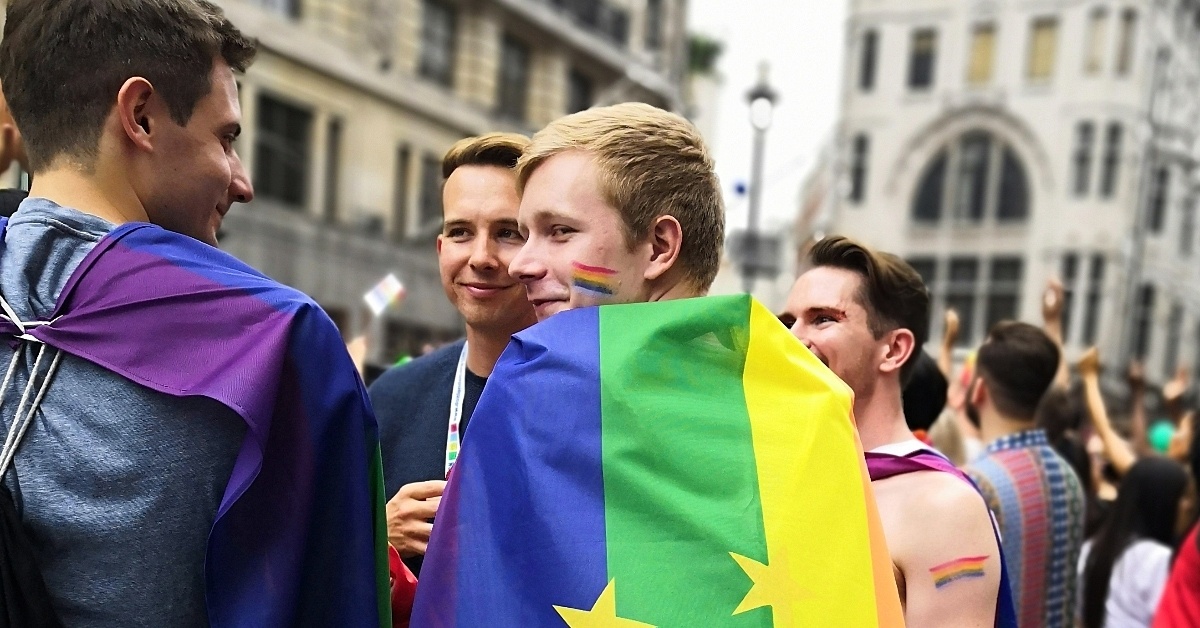BY: Ashley Blackwell
Published 8 months ago

As conversations surrounding queer inclusivity become more frequent and publicized, the need for educational spaces in and out of the community is at an all-time high. Let’s get into the difference between LGBTQIA+ History Month and Pride Month.
With everything from misused pronouns to derogatory terms, it’s no secret that today’s climate for sexual minorities is vastly different from decades ago. Unfortunately, before cancel culture lived the infamous ‘T’ slur, with the ‘F’ word also being tossed around as if it were ever to be considered a casual reference. Individuals were dehumanized and objectified due to their personal preferences, ethicalities were (seemingly) nonexistent, and identity labels were (almost) viewed as mandatory.
However, through the evolution of social media and modern-day society came a wave of virtual protest that provided a new day of justice and unprecedented voices that refused to continue to hide in the closet or underneath the conventionality of humanity’s “gender norms.” By acknowledging that rainbow people deserve the same loudness that their colors represent on the flag, a list of LGBTQIA+-honored holidays has morphed into global traditions that advocates and allies look forward to.

So… what is the difference between LGBTQIA+ History Month and Pride Month?
LGBTQIA+ History Month is a monthlong observance paying homage to monumental figures and achievements in lesbian, gay, bisexual, and transgender history. Rodney Wilson, a high school history teacher from Missouri, established it in 1994. Along with the United States, the celebration has extended to Australia, Canada, Cuba, Finland, Germany, Hungary, Italy, and the United Kingdom, but the reserved month varies by country. The United States recognizes the month of October for the commemoration.
Pride Month is another 30-day custom on the calendar of same-gender-loving organizations. The annual stint is dedicated to the visibility, equality, and liberation of LGBTQIA+ culture and the social group’s worldwide movement (as a whole). It came into prominence only one year after Black transwoman and activist Marsha P. Johnson’s revolutionary hand in the Stonewall uprising. If you didn’t know, on Jun. 28, 1969, police raided a gay bar in New York City’s Greenwich Village, where Johnson, along with other clubgoers, stood their ground against authorities. This resulted in a series of riots that served as a pivotal moment in LGBTQIA+ civil rights. Because of this, Pride Month is set in June.
While saluting LGBT History Month often involves everything from educational events to enlightening panels, Pride Month is popular for its various rallies and parties that bask in the freedom of the modern-day LGBTQIA+ community.
“There was so much going on outside of my classroom. My textbook, for example, didn’t have anything about LGBTQ people or LGBTQ history,” Wilson said in a recent interview with PBS News Hour on how LGBTQIA+ History Month came about. “I had trepidation, but I also had anticipation, that [starting LGBTQIA+ History Month] was the right thing to do, this was a good thing to do. This would be beneficial to my students and be beneficial to my school, and be beneficial to myself because there would no longer be a place where when I show up, I have to go in a closet [or] I have to pretend to be something I’m not.”
Aside from Wilson’s groundbreaking observance, these are other queer-specific holidays celebrated during October.
Per GLAAD (Gay and Lesbian Alliance Against Defamation), the dates are as follows:
- International Lesbian Day (Oct. 8)
- National Coming Out Day (Oct. 11)
- National LGBT Center Awareness Day (Oct. 19)
- International Pronouns Day (Third Wednesday in Oct.)
- Spirit Day (Third Thursday in Oct.)
- Asexual Awareness Week (Last week in Oct.)
- Intersex Awareness Day (Oct. 26)
How did you bring in Pride Month and LGBTQIA+ History Month this year? Share below!









